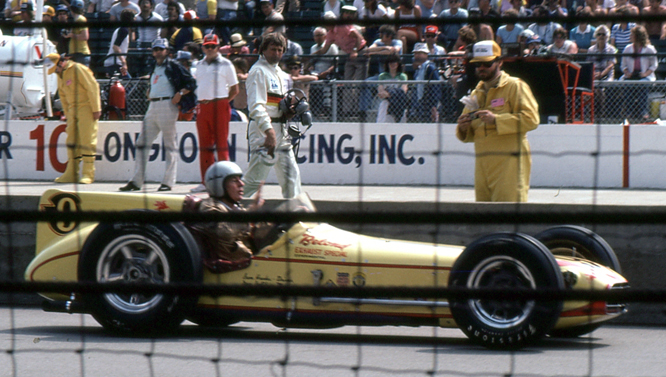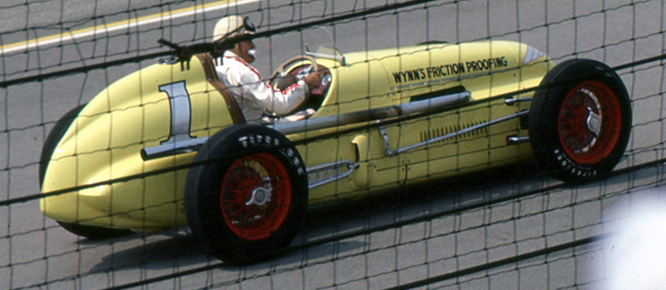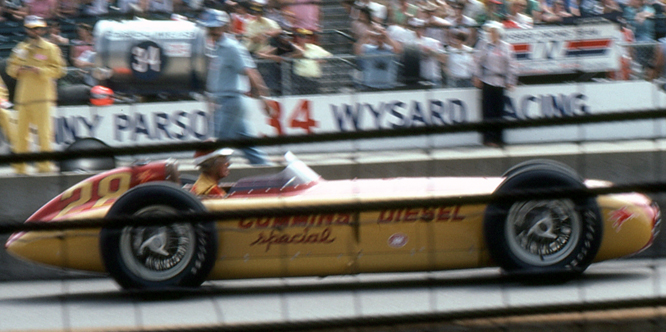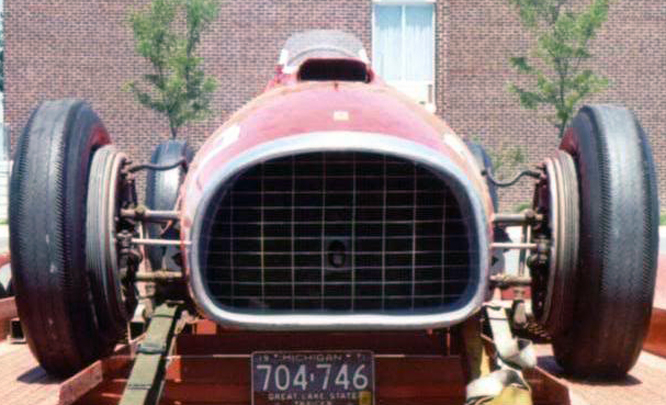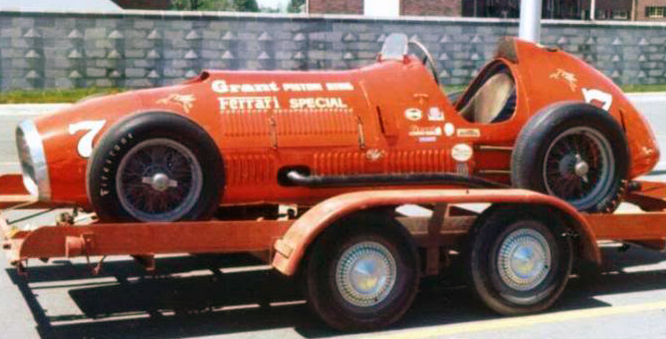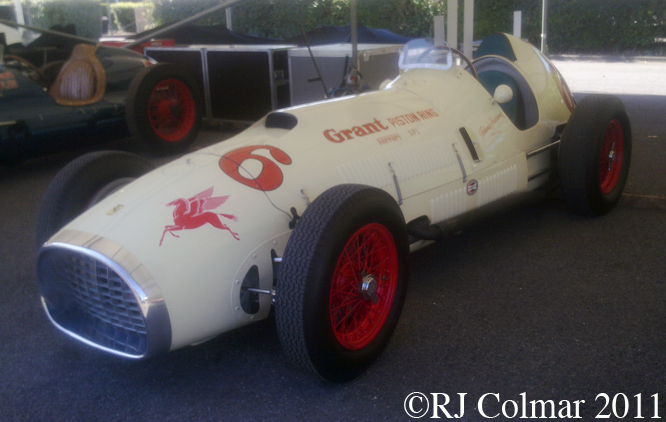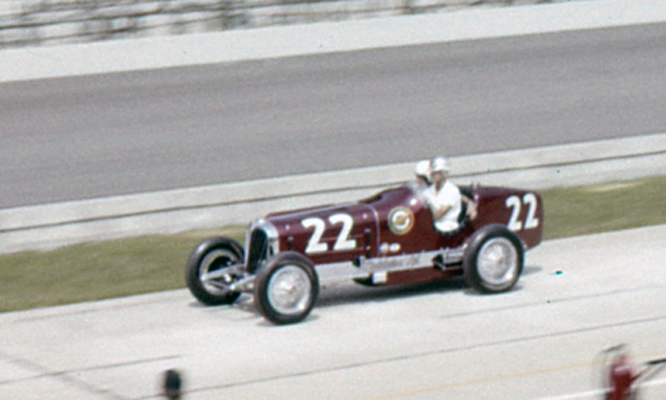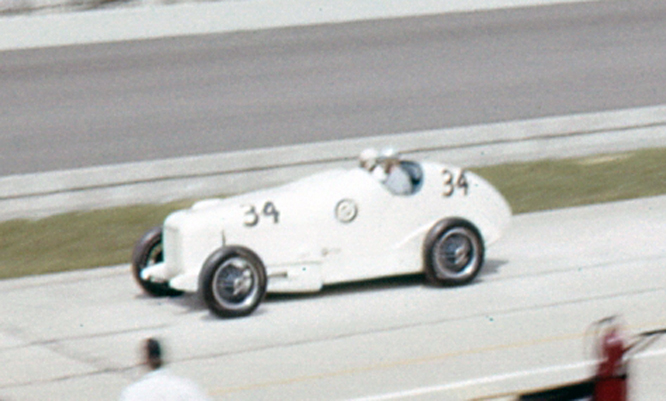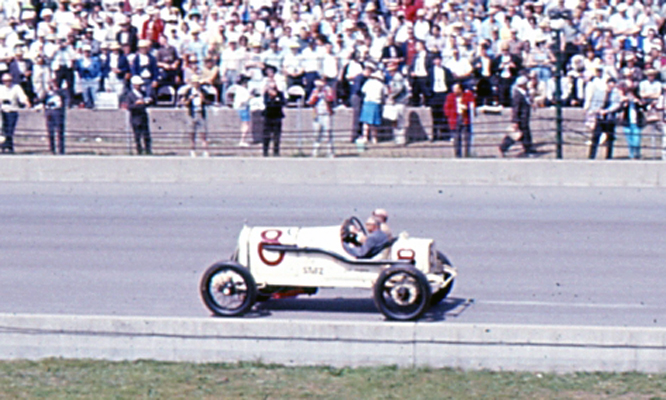Thanks to Ed Arnadin‘s photos today we will be continuing our 100th anniversary of the first running of the Indianapolis 500 by having a behind the scenes look at Indianapolis in 1960.
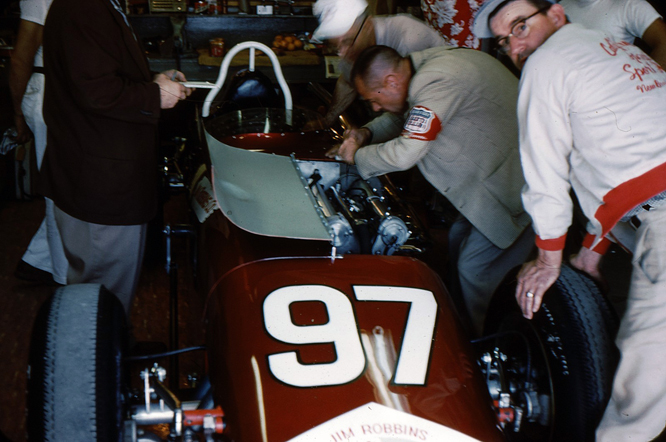
Our story begins with an invitation from a mutual friend of Ed Arnaudin and the Indy car owner Jim Robbins to visit the garage of the #97 Jim Robbins Special, where a Watson Roadster powered by an upright 4178 cc / 255 cui twin overhead cam Offenhauser is being prepared.
AJ Watson shares the record for building the most cars that won the ‘Indy 500’s’, seven, with Roger S Penske. Watson built his first car ‘City of Glendale’ in 1950, Dick Rathmann qualified 18th on the grid driving the ‘City of Glendale and retired from the race with a stalled motor after 25 laps. After working on aircraft assembly lines for Lockheed Watson was hired as Chief Mechanic by John Zink in 1954.
Watson modified Zinks Kurtis KK500C roadster and Bob Swiekert duly won the 1955 Indy 500 with it, in 1956 AJ built the first of 23 Watson Roadsters for John Zink, these iconic vehicles were to win a further six Indy 500’s in 9 years.
The Watson chassis was narrower than the Kurtis, featured extensive use of 4130 chromoly tubing in place of the steel used by Kurtis, innovative use of magnesium in the drive line and body panels saved further weight. The Offenhauser engine was mounted upright on the left side of the chassis to increase weight bias on the corners of the car closest to the inside of the track rather than tilting the engine at 36 degrees as Kurtis had done and later Eperly / Salih would do with engines 18 degrees off horizontal.
With a 220 lb weight saving the 1,640 lb Watson Roadster design remained fundamentally unchanged from 1956 until 1963, AJ Foyt drove a Watson into Victory Lane at Indianapolis for the last time in 1964.
The car, seen being worked on above was one of three entered in the race owned by Safety Belt manufacturer Jim Robbin’s, the #97 was driven by the man who first put a Watson on the grid of the Indy 500 in ’53, Dick Rathmann. In 1960 Dick qualified for fourth spot on the grid and retired from the race in 31st place after 42 laps with defective brakes.
Dick Rathmann had a varied career spanning 1949 – 1964 encompassing the AAA Championship, NASCAR (13 wins, all in Hudsons, from 128 starts) and latterly the USAC Championship. He started from the Indy pole in 1958 but was collected in an accident on the opening lap by fellow front row starter Ed Elisan, the ensuing 15 car pile up cost Pat O’Conner his life.
As a result of that fatal accident Dick Rathmann became the first man to start from pole not to complete a lap of the race, a stat that has since been emulated by Roberto Guerrero and Scott Sharp. Rathmann’s best Indy 500 finish was 4th in 1956.
Now this story enters the racing twighlight zone, ever since races were organised teams and drivers have made it there business to pull the wool over organisers eye’s. ‘Dick’ Rathmann was actually born James. James had a brother, younger by four years, called Richard and when underage Richard wanted to go racing in 1946 James and Richard simply swapped names, James became ‘Dick’ and Richard became ‘Jim’ a change that ended up sticking for life.
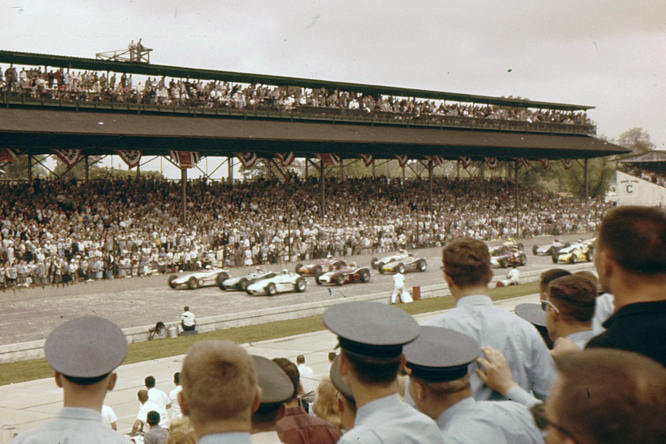
In 1960 Jim Rathmann was the driver of the #4 Ken Paul Special a Watson Offenhauser Roadster MK2, Jim qualified 2nd and can be seen in the blue car in the middle of the front row as the cars cross the 100 yards of bricks at the start of the 1960 Indy 500 above, his brother ‘Dick’ in the #97 is on the inside of the second row.
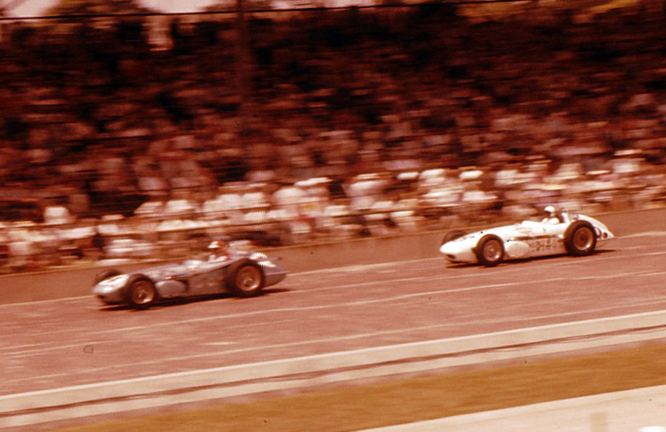
Jim seen here battling with Eddie Sachs went on to win the 1960 Indy 500, a race memorable because the lead changed a record 29 times. Last year (2010) Jim became the sixth Indy 500 winner to celebrate their 50th Anniversary of the Indy 500 win, Ray Harroun, Jules Goux, Rene Thomas, Peter DePaolo and Louis Meyer were the others.
Three time Indy winner Johnny Rutherford presented Jim with a trophy to commemorate the 50th anniversary of his win, Rutherford who was present at Indy as a spectator for the first time in 1960 remembered the race thus ” We had seats in the North grandstands of the infield on the backstretch. The duel between Jim and Rodger [Ward winner of the 1959 Indy 500] was one for the record books. Little did we know that some 50 years later [the 29 lead changes] would still be an Indy 500 record.”
Jim said of the 1960 Indy 500 “That was a great duel with Rodger. Ward was one of the toughest drivers out there and beating him meant a lot to me, and winning the Indy 500 changed my entire life. Winning the ‘500’ was and still is the all-time highlight of my racing career. To win that day, in that race against Ward means so much to me.”
Slightly off topic after retirement Jim became a Cadillac dealer in Melbourne, Florida and is credited with convincing GM president Ed Cole that GM should set up a deal to supply his friends the astronauts on the NASA space programmes with a pair of new cars each year.
My thanks to Steve Arnaudin for the scans of his Dad’s slides, to B² and Indycar Nation for additional information.
Hope you have enjoyed today’s 1960 edition of ‘Gettin’ a lil psycho on tyres’ and that you will join me again for a celebration of the 50th anniversary of the first running of the Indianapolis 500. Don’t forget to come back now !


